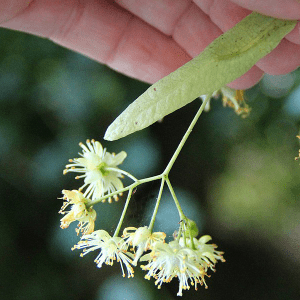COMMON LIME / SPRING / SUMMER / AUTUMN / EDIBLE
COMMON NAMES
Common lime, European Lime, Linden.
BOTANICAL NAME
Tilia x Europaea
SCIENTIFIC CLASSIFICATION
Kingdom – Plantae
Order – Malvales
Family – Malvaceae
Genus – Tilia
PHYSICAL CHARACTERISTICS For Lime Trees
Stems/Bark
Young trees have grey/brown smooth bark which becomes more gnarled over time. Suckers or side shoots are common around the base of the trunk.
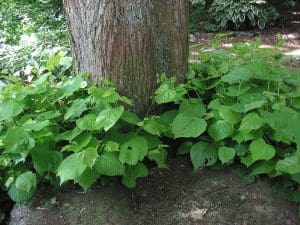
Leaves
The leaves are heart shaped and asymmetrical. The younger translucent one’s are better to eat.
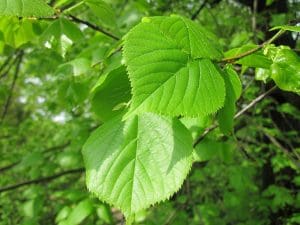
Flowers
Small yellow/white flowers which hang from a leaf bract. They have a sweet, honey like scent.
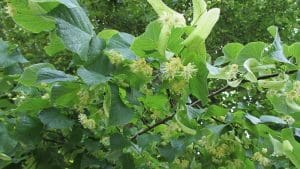
Seeds/Fruits
The flowers develop into hard, round, brown seeds.
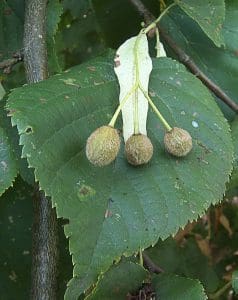
KNOWN HAZARDS
None known.
COULD BE CONFUSED WITH
There are a few lime species growing in the UK and it can be hard to differentiate them as they readily hybridise with each other, but they are all safe to eat.
RANGE AND DISTRIBUTION
Very common, native to the UK and Europe.
HABITAT
Lime is commonly found on tree lined streets, parks and mixed woodlands.
EDIBLE USES
The young, almost translucent leaves are the best for eating, they make a nice addition to a salad.
The fruit including the leaf bract are best dried and used for Linden tea.



